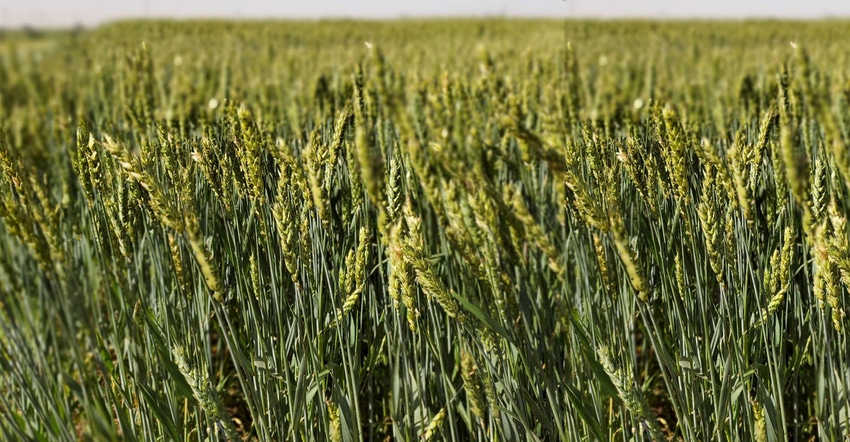May 24, 2019

At this writing, Oklahoma and Texas 2019 wheat may be forward contracted for harvest delivery for around $4.15. This price is within 55 cents of USDA’s 2019/20 projected average annual price of $4.70 and within about 35 cents of Oklahoma and Texas projected 2019/20 average annual prices.
In the May 2019 World Agricultural Supply and Demand Estimates (WASDE) report, 2019/20 wheat marketing year U.S. wheat prices received were projected to average $4.70. During the last 10 years, Oklahoma average annual wheat prices were 22 cents less than U.S. prices. Average annual Texas wheat prices were 17 cents less. These results imply that 2019/20 Oklahoma wheat prices received are projected to average $4.48, and Texas wheat prices are projected to average $4.53.
During the last 10 years, average annual Oklahoma wheat prices have been between $3.44 and $7.44. Texas average annual prices have been between $3.54 and $7.34. The Oklahoma 10-year average price received is $5.49. The Texas average price received is $5.54.
For wheat prices to average in the low end (between $3.44 and $4.48) of the above price ranges, Oklahoma and Texas wheat production needs to be above average with low protein and/or test weight plus 2019/20 world production meeting expectations. The 2016/17 ($3.44) and 2017/18 ($3.98) wheat marketing years are examples of low-quality Oklahoma/Texas wheat production and record world wheat production, resulting in relatively low average prices.
For wheat prices to average in the top end of the price ranges ($5.49 to $7.44), world wheat production must be significantly less than expected, especially in the Black Sea region (Russia and Ukraine), and Oklahoma/Texas wheat must be at least average in protein and test weight. The 2010/11 wheat marketing year is a good example of this situation.
World wheat production for 2019/20 is projected to be a record 28.6 billion bushels compared to 26.9 billion bushels in 2018/19 and the previous record of 28.0 billion bushels (2016/17).
The USDA projected 2019/20 Russian and Ukrainian combined wheat production to be 3.9 billion bushels. Ten percent higher than last year and the second highest on record. Russian and Ukrainian wheat harvests begin in mid-July and go through September.
Wheat producers have three major questions. How much wheat will they produce? Will wheat quality meet market requirements? And, what will wheat prices do? The answers to the first two questions impact the last question.
The USDA’s crop condition report indicates that hard red winter wheat yields are expected to be above average. Test weight is expected to be average or better. Above average yields may result in below average protein. Reports indicate that some producers applied nitrogen fertilizer to increase protein levels.
United States wheat production is projected to be 1.897 billion bushels, which is one percent higher than last year. Recent heavy rains across Oklahoma, Kansas, and most of the soft red winter wheat area may reduce both yield and quality. Excess rain in much of the hard red spring area may limit planted acres.
What is known for certain about prices is that at this writing and at some elevators, wheat may be forward contracted for harvest delivery for $4.15.
One last factor to consider is Manage Fund positions in wheat futures contracts. Both hard red winter and soft red winter wheat futures contract positions are net short (sold) by 67 percent (twice as many short as long). Eighty percent of hard red spring wheat contract positions are short. Black Sea wheat contract positions are 91 percent long (bought).
Unless wheat supply and demand conditions change, producers should expect below $5 wheat prices for the next year or so.
About the Author(s)
You May Also Like






